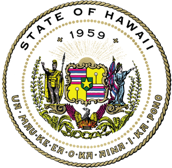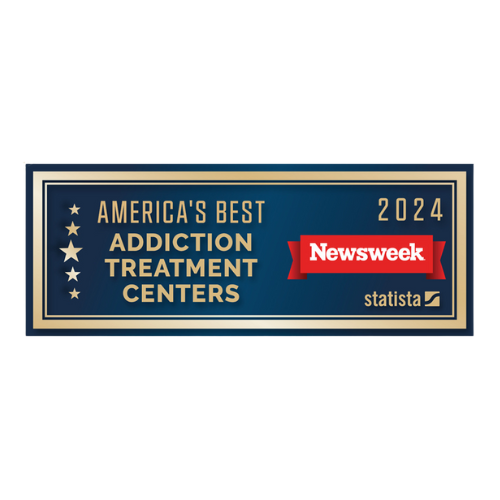Each person’s experiences with alcohol addiction, drug addiction, mental health disorders, and recovery will be unique. Likewise, no two people will have the same best practices for pursuing a healthy and transformed life. At Hawaii Island Recovery, each program is curated to address a person’s individual experiences, needs, and goals throughout treatment, and built from the ground up with these goals in mind to find the best practices for each person. One of the options to explore in one’s journey to sobriety and healing involves animal-assisted therapy (AAT), and understanding its advantages can empower each person to decide if it may be an effective approach for them.
What Is Animal-Assisted Therapy?
Animal-assisted therapy (AAT) involves using animals throughout the recovery process to create a holistic approach to care. It can take many forms and may include horses, dogs, cats, rabbits, and much more, even incorporating aquatic life like dolphins, depending on what is available. In animal-assisted therapy, animals can either be observed or even interacted with, depending on the situation, from watching to petting and even helping to care for them for a variety of positive effects for those overcoming addiction.
However, AAT is not a comprehensive treatment modality on its own, and it is not a replacement for other proven therapeutic techniques like cognitive-behavioral therapy (CBT), individual or group treatment, or other holistic approaches to sobriety. Rather, it is most effective as a complementary therapy to be used in conjunction with other strategies for a more personalized approach to treatment and addiction recovery.
Does Animal-Assisted Therapy Really Help?
Each person will have their own unique best practices, and AAT may not be effective for everyone. However, having it available as an option can be transformative for some people. Knowing the benefits of AAT and how it can be incorporated into each person’s program can be the best way to determine if it is an approach that may be right for each individual.
Likewise, different facilities may have different opportunities when it comes to AAT. Calling Hawaii Island Recovery or a local treatment facility to inquire about these options and how it is approached is another step in personalizing each person’s treatment plan for a sober future. For those who want to explore the healing potential of AAT, understanding how it can aid in mental and emotional wellness and overall recovery can help set appropriate expectations and plans for incorporating animal-assisted therapy.
Stress Reduction
One of animal-assisted therapy’s most common and beneficial effects is animals’ ability to reduce stress. Interacting with animals can promote emotional calm, whether a person is interacting with them in a calm space or is watching animals in their serene natural environment. Animals can also help address feelings of anxiety and depression, improving overall stress reduction and improving emotional regulation to make engaging in other therapies easier.
Challenging Isolation With Animal-Assisted Therapy
Isolation is a major hurdle for many navigating their recovery from drugs or alcohol. Addiction can separate a person from friends, family, and loved ones, with many people feeling isolated in both their challenges and throughout the recovery process. It can also be difficult to open up to strangers, even if they are professionals, about the challenges that addiction has brought. AAT can be a great bridge to challenging isolation in sobriety.
Interacting with animals can be a great way to challenge feelings of loneliness and isolation, providing unconditional affection or attention. Likewise, animals interact with a person completely in the present, responding to a person’s behaviors and attitudes now rather than judging a person on appearances or past mistakes. This can empower a person to focus on their present self during healing, avoiding lingering on past mistakes and focusing on present changes and actions.
Using Animal-Assisted Therapy to Practice Communication
While it may seem odd at first, AAT can also be exceptionally beneficial for those beginning to explore effective communication strategies in addiction recovery. Opening up and finding the right words and approach to address complicated and vulnerable topics like addiction can be difficult. Having an outlet to safely practice saying difficult things out loud can be incredibly helpful. Animals can create this safe environment and encourage those in recovery to begin exploring communication without judgment.
Practicing communication with animals can also help encourage heightened emotional awareness and promote a greater sense of empathy while learning to confront difficult topics in recovery.
Effective Distractions
Distracting oneself from the challenges of addiction recovery can be incredibly important. Delving into new experiences with animals can be a great distraction from otherwise difficult times, such as navigating persistent urges and cravings that may impact daily life in sobriety. While these stresses will pass in time, occupying oneself with the calming presence of an animal can distract the mind and encourage focus away from otherwise difficult urges that may affect sobriety.
Getting Outside
To interact with animals, a person must get outside and get moving. AAT can be a great medium to encourage getting outside and into nature. Interacting with animals also encourages physical activity, helping improve physical and mental health while overcoming addiction.
Fostering Responsibility and Accountability With Animal-Assisted Therapy
For some, animal-assisted therapy can be observing animals in their natural habitat and their interactions with nature for a relaxing approach to healing. However, others may get involved with animals directly or may even be part of their care. Caring for animals, whether feeding, brushing, watering, exercising, or other activities, can be a great way to explore new responsibilities and accountability in addiction recovery – skills that can be instrumental for rebuilding relationships with loved ones in sobriety and for gaining a feeling of control over daily life.
Promoting Spiritual Healing
Hawaii is home to many unique fauna, with oceanic and terrestrial animals alike having deep ties to the island, its culture, and its healing energies. Whether interacting with animals or observing the unique wildlife of Hawaii from a safe and respectful distance, these animals can encourage a deeper spiritual connection with oneself and with the island. This respect for nature also permeates throughout Hawaiian culture, helping each person become more spiritually minded throughout their healing journey with AAT while also ingratiating themselves into an accepting culture and community across the island.
Incorporating Animal-Assisted Therapy at Hawaii Island Recovery
Hawaii Island Recovery is not a dedicated ranch or wildlife preserve but there are still opportunities to incorporate AAT into each person’s recovery journey. Talking to a professional at Hawaii Island Recovery about expectations around AAT and potential opportunities is the best way to explore how we can personalize your program to explore this potential supplementary form of healing.
On-Site Opportunities
Hawaii Island Recovery does not house animals on-site, but that doesn’t mean that there can’t be opportunities. There are occasional dogs that spend time at the facility to help those in recovery begin to explore the potential benefits of AAT during their time in residential treatment. However, further accommodations can always be made. Hawaii Island Recovery’s dedication to personalizing treatment for each individual to find the best practices can always be explored. Calling to talk to a professional or exploring these options during intake interviews can be the best way to open a discussion on how this option can be further explored during a person’s time in residential treatment.
Oceanic Healing
However, Hawaii Island Recovery is dedicated to exploring the natural advantages of the Hawaiian islands during each person’s stay. One of the most impactful ways that AAT is explored is through observing Hawaii’s natural wildlife in its freest forms. Beach excursions and time on the water are both common experiential therapies, with watching dolphins or the unique fish and sea life of Hawaii being a crucial part of understanding the island and its spiritual and healing properties.
However, swimming with dolphins and manta rays is also an option for those ready to get in the water and explore the majesty of Hawaii’s natural wildlife while trying new experiences and making new memories. While popular as a tourist attraction, these experiences can also be approached through the dedicated therapeutic lens to help encourage change and improve mental health while overcoming addiction. Overcoming addiction is still hard work, but exploring new ideas and experiences can be a great way to separate past destructive lifestyles and present possibilities in sobriety.
Nature Hikes
Going on nature hikes alongside professionals and peers in addiction recovery is also a common experiential therapy at Hawaii Island Recovery. However, these are much more than just getting out to stretch a person’s legs. Rather, it can be a great time to explore the natural advantages of the Hawaiian island.
Walking through nature and observing wildlife in its natural habitat can be a great way to deepen a person’s connection to the island itself, encouraging calm, spiritual healing, and creating a place of belonging as a person explores these spiritual connections. Nature hikes can also be a great way to detach from stresses or physical barriers to reduce stress and embrace a feeling of freedom and mindfulness.
The wildlife of Hawaii also greatly influences the culture of the island. Going on nature hikes to understand the animals of the island can be a great way to become a part of the healing community and spirit of aloha that permeates the island, cultural programming and outreach, and even group therapy sessions during a person’s stay.
Continuing to Reap the Benefits
While AAT through Hawaii Island Recovery is certainly a way to approach each program with us, it is not the only way a person can benefit from animals throughout their recovery journey. Rather, some may continue to explore the potential benefits of animals even after their time in residential treatment has ended. For some, this can be finding local opportunities to interact with animals through local experiences. Going to a zoo, new experiences like goat yoga, finding personal hiking trails, and more are all possible ways to continue exploring the benefits of animal-assisted therapy and informing healing in daily life.
However, one of the most common methods of continuing to engage with animal-assisted therapy throughout recovery is through adopting a pet at home to create a nurturing relationship and environment. While this can have many benefits, there are also some risks associated with this approach that a person should consider before taking on an animal of their own.
Adopting a Pet in Recovery
Pets can be incredible partners. Becoming infatuated with a potential animal partner is easy, instantly uplifting a person’s mood and improving emotional resilience in daily life. However, they are also a lot of responsibility, and talking with family members, peers, and supports about the decision first is crucial.
Setting and managing expectations of a pet while continuing to engage in other effective treatments like ongoing outpatient therapy is necessary. Also, like animal-assisted therapy in residential treatment, a pet will not somehow “cure” addiction or replace the need for personal effort and other strategies.
Financial Stability
Talking about finances in recovery can be challenging, as there really is no price a person can put on health and sobriety. However, a person should be financially capable of taking on the responsibility of a pet. Pets can be expensive, from the animal itself to the associated food and equipment like cages, collars, tanks, and more. Associated veterinary visits should also be considered when making a budget and before a purchase.
Likewise, a person must also express an ability to make and tend to a consistent budget to ensure that sudden financial challenges would not impact the overall health of a pet. Working with professionals, family members, and loved ones to create a budget for sobriety and spending time sticking to this budget to ensure that a pet is within financial reason is necessary before bringing a pet home.
Personal Responsibility
Taking on a pet is a huge responsibility. Teaching a person to remain responsible and accountable for the care of an animal is part of their benefit. While animals can help a person continue to practice accountability and develop a schedule around care, there needs to be a level of accountability and responsibility already in place before an animal should be considered.
Sticking to a regular daily sober routine, taking on and completing responsibilities around the house, and doing so while having free time for self-care are all part of planning for a pet and continuing to benefit from animal-assisted therapy at home. Setting expectations with loved ones and working together to prepare for the responsibility can be essential.
Creating a Plan
While becoming enamored with the idea of bringing home a pet in recovery is easy, it is not a simple decision. Having a plan on how to care for it, what responsibilities are entailed, and setting expectations for how a pet can continue to benefit those navigating their daily sober lives is all part of bringing out their therapeutic value. For some, a plan can encourage further physical activity and challenge feelings of isolation through walks, fostering communication, and structuring a daily routine.
Simply having a pet isn’t guaranteed to bring all of these benefits. Rather, they must be actively nourished in recovery. Without a plan, many pets can end up causing even more stress, affecting the health and wellness of both the person in recovery and the animal. Having a plan to actively care for, leverage, and train if necessary is all part of continuing to engage in dedicated animal-assisted treatment in sobriety.
Animals can be amazing partners at any point of the recovery process, whether instilling a feeling of calm and distraction during detox, creating new memories and perspectives in experiential therapies, or continuing to find ways to engage with animals at home as an alumnus in outpatient treatment. However, it is not a comprehensive approach on its own and not a strategy that is necessarily the best option for everyone. Talking to a professional about expectations, personal situations, experiences, and more can be the best way to determine if AAT is the right choice for any specific person.
Animals can have a lot of therapeutic value for those overcoming addiction, and dedicated animal-assisted therapy can be a great way to incorporate their healing potential throughout the journey of overcoming addiction to drugs or alcohol. At Hawaii Island Recovery, finding new and effective ways to personalize your treatment is part of our dedication to sustainable and effective healing, and we are prepared to help you explore the benefits of animals as a part of your healing journey. We offer an array of new experiences to get involved in nature while also helping develop the life skills, strategies, and expectations to continue utilizing personalized strategies like AAT in daily life outside our walls. For more information, call (866) 390-5070.
 Hawaii Island Recovery
Hawaii Island Recovery 











